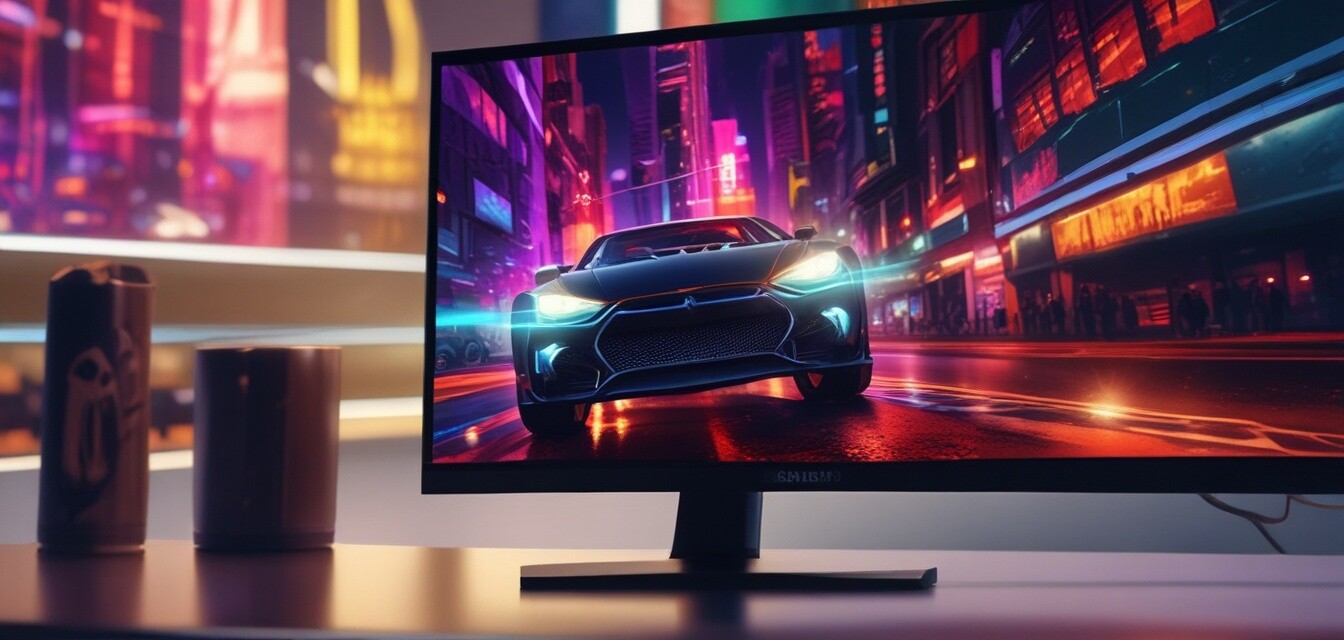
The Ultimate Guide to OLED Monitor Features
Key Takeaways
- OLED monitors deliver exceptional color accuracy and contrast.
- Key features to look for include resolution, refresh rate, and screen size.
- Understanding panel types and response times can enhance your gaming experience.
- Consider budget, gaming needs, and compatibility for the best choice.
Choosing the right OLED gaming monitor can be an overwhelming process, especially with the multitude of features available. This guide aims to break down essential features that every gamer should consider when buying an OLED monitor. With the exciting advancements in display technology, ensuring you understand what to look for can make a significant difference in your gaming experience.
What is an OLED Monitor?
OLED, or Organic Light Emitting Diode, is a display technology that provides higher contrast ratios and more vibrant colors compared to traditional LCD displays. Each pixel in an OLED screen is individually lit, allowing for blacks that are truly black, which enhances the overall visual experience.
Must-Have Features in OLED Monitors
1. Resolution
The resolution determines how much detail will be visible on your screen. The most common resolutions for gaming monitors are:
| Resolution | Details |
|---|---|
| Full HD (1920 x 1080) | Standard for most gaming, provides good quality for casual gaming. |
| Quad HD (2560 x 1440) | A step up from Full HD, ideal for competitive gaming. |
| 4K (3840 x 2160) | Ultra-high-definition for stunning visuals, best for advanced gamers. |
2. Refresh Rate
The refresh rate, measured in Hertz (Hz), indicates how many times the image on the screen is refreshed per second. Higher refresh rates result in smoother gameplay. Here are the common options:
| Refresh Rate | Gaming Suitability |
|---|---|
| 60Hz | Good for casual gaming |
| 120Hz | Better for fast-paced gaming |
| 240Hz | Optimal for competitive gaming |
3. Screen Size
The size of the monitor can significantly affect your gaming immersion. Here’s a breakdown of common screen sizes and their benefits:
- 24-27 inches: Perfect for close gaming setups and desktop use.
- 32 inches: Offers a larger field of view, suitable for immersive gaming experiences.
- 34 inches and larger: Ideal for ultrawide monitors for a more extensive view, enhancing gameplay.
4. Panel Types and Technologies
While OLED is a type of panel technology, it competes with others like IPS and VA. Here's a brief comparison:
| Panel Type | Description | Pros | Cons |
|---|---|---|---|
| OLED | Self-lighting pixels for higher contrast. | Vibrant colors, deep blacks. | More expensive, potential burn-in. |
| IPS | Offers good color accuracy and viewing angles. | Great for design work, decent response times. | Slower refresh rates compared to OLED. |
| VA | Higher contrast ratios. | Good for dark room gaming. | Slower response times, narrower viewing angles. |
5. Response Time
Response time is crucial for gaming as it defines how quickly a pixel can change colors. Lower is better:
- 1ms - 4ms: Ideal for competitive gaming.
- 5ms - 8ms: Acceptable for casual gameplay.
Design and Aesthetics
Your chosen monitor's aesthetics can also enhance your gaming setup. Key elements to consider include:
- Thin bezels for a modern look.
- RGB lighting to match your gaming gear.
- Adjustable stands for personalized comfort.
Budget Considerations
When selecting your OLED monitor, it’s crucial to set a realistic budget. Here’s how to approach this:
- Determine your primary gaming needs.
- Research various brands and models.
- Consider warranties and post-purchase support.
Compatibility and Accessories
Ensure your OLED monitor is compatible with your gaming rig. Consider checking for:
- Graphics card compatibility.
- Ports and connectors (HDMI, DisplayPort).
- Additional accessories such as monitor mounts.
Final Thoughts
Choosing the right OLED gaming monitor requires careful consideration of various features, including resolution, refresh rate, screen size, and panel types. Make sure you assess your gaming style and budget before making a decision. For more information on different categories of OLED monitors, visit our 4K OLED Gaming Monitors, Budget-Friendly OLED Gaming Monitors, and Ultrawide OLED Gaming Monitors sections.
Pros
- Excellent image quality with vibrant colors and deep blacks.
- Fast response times, suitable for gaming.
- Slim designs enhance gaming aesthetics.
Cons
- Higher price point compared to regular monitors.
- Risk of burn-in with static images.
- Limited availability in certain sizes.
For further reading on gaming monitors and their features, visit our Buying Guides for expert advice and tips.